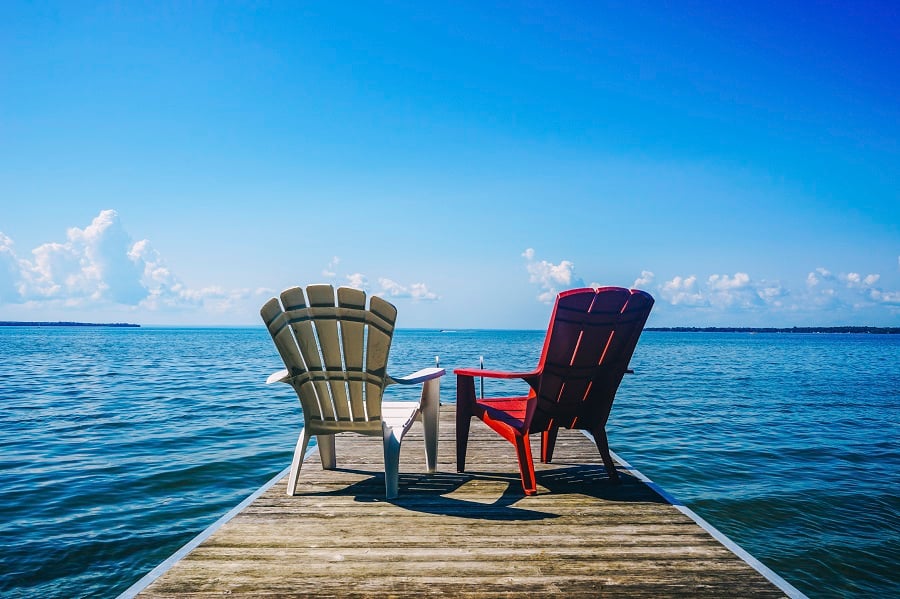I was delighted to learn that my home state of Virginia snagged the number-one spot in the 2016 Retirement Environment Index (REI) created by investment advisory firm LPL Financial Research.
The second annual LPL index ranks each of the 50 states and the District of Columbia based on their desirability for pre-retirees. The rankings are based on a variety of factors considered important for many 45- to 64-year-olds who are trying to maximize their dollars now as they start thinking about retirement. It measures key elements including financial data, health care, housing, community qualify of life, wellness, employment and education — all aspects considered essential to a happy retirement.
Virginia ranked number one for the second year in a row, thanks largely to its high median income relative to the national average, low cost of living and below-average tax burden. It was the only East Coast state among the top five winners that were otherwise dominated by mid-western states including South Dakota, Wyoming, Michigan and Iowa.
It just goes to show that while Florida may have been the top destination for past generations of retirees focused on sunshine and golf courses, many boomers are looking for different factors as they move into their next phase of life. The Sunshine State ranked 39th in the LPL index.
The bottom five states in the index, with an overall F grade, were California, Alaska, New York, Oregon and New Jersey, due mainly to their high taxes, expensive housing and above-average cost of living.
“Health care, rising home costs and access to creating the quality of life you desire should be factored into your long-term plan,” David Reich, LPL executive vice president and head of Retirement Plans said in a statement accompanying the recent release of the index. The
report may provide some insights for your retirement goals and plans.
I'd like to say my husband and I purposely chose Virginia as an ideal future-retirement spot. But frankly, it was dumb luck and the result of a decision we made about 30 years ago.
As we both worked in Washington, D.C., at the time, the obvious house-hunting locations were confined to D.C. and its surrounding suburbs in Maryland and Virginia. With one young son and another child on the way, Virginia's lower housing prices and lower taxes compared to the other locations were attractive. But looking far into the future, it was the Old Dominion's excellent state university system that cinched the deal.
Now empty nesters, we are perfectly happy to stay put like about half of the respondents to another recent retirement survey conducted by Voya Financial. Although 49% of the 1,000 respondents said they thought their current location and lifestyle was ideal for retirement, the numbers changed based on whether they owned or rented their homes. More than 60% of current homeowners stated that their ideal retirement location is where they live now compared to about one-third of renters.
Blame it on inertia, or nostalgia, but home sweet home feels right to my husband Mike, and me, too. This is my fifth
dispatch from the retirement front, which I hope can offer some insights for advisers working with retired and soon-to-be-retired clients.
Mike has been retired from his job as a federal employee for almost two years. He continues to find the rhythm in his new lifestyle, fitting in daily workouts at the gym in between his ever-expanding duties as my head researcher, marketer and occasional chauffeur to the airport as I travel around the country offering seminars on Social Security.
One of the many joys of having a retired husband is knowing someone is always at home to deal with the constant parade of contractors as we update our home so we can age in place. We're in good company. Bankrate.com reports that 36 million homeowners plan to dabble in renovations this year.
I shudder to think how two working adults would have to juggle their professional commitments and personal leave to deal with time-consuming renovations and occasional setbacks, like when our door contractor accidentally shattered the transom he was installing or when our bathroom remodeler discovered an exhaust fan's ductwork was choked with old birds' nests.
Having one spouse still working provides a financial cushion to fund home improvements from cash flow rather than loans while we work to pay off our mortgage before I finally retire — a goal shared by 80% of non-retired homeowners in the Voya survey.
The funny thing is I now realize that this is how most Americans lived for generations: one breadwinner and one homemaker. Maybe they were on to something. My favorite quote from a stay-at-home wife about her family's shared responsibilities: “He makes a living and I make living better.” In our case, the roles are now reversed.
(Questions about new Social Security rules? Find the answers in my new ebook.)
Mary Beth Franklin is a certified financial planner.







